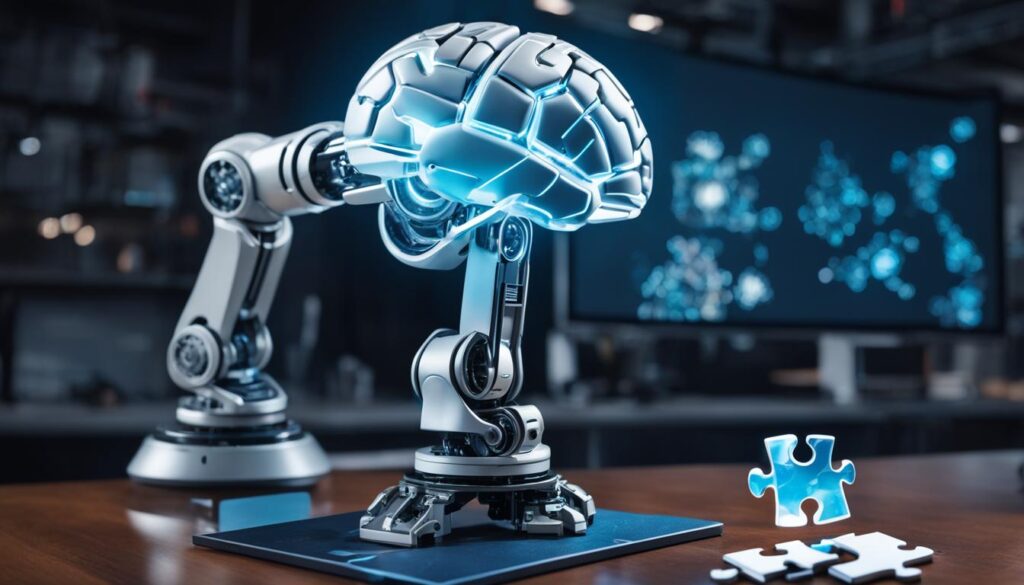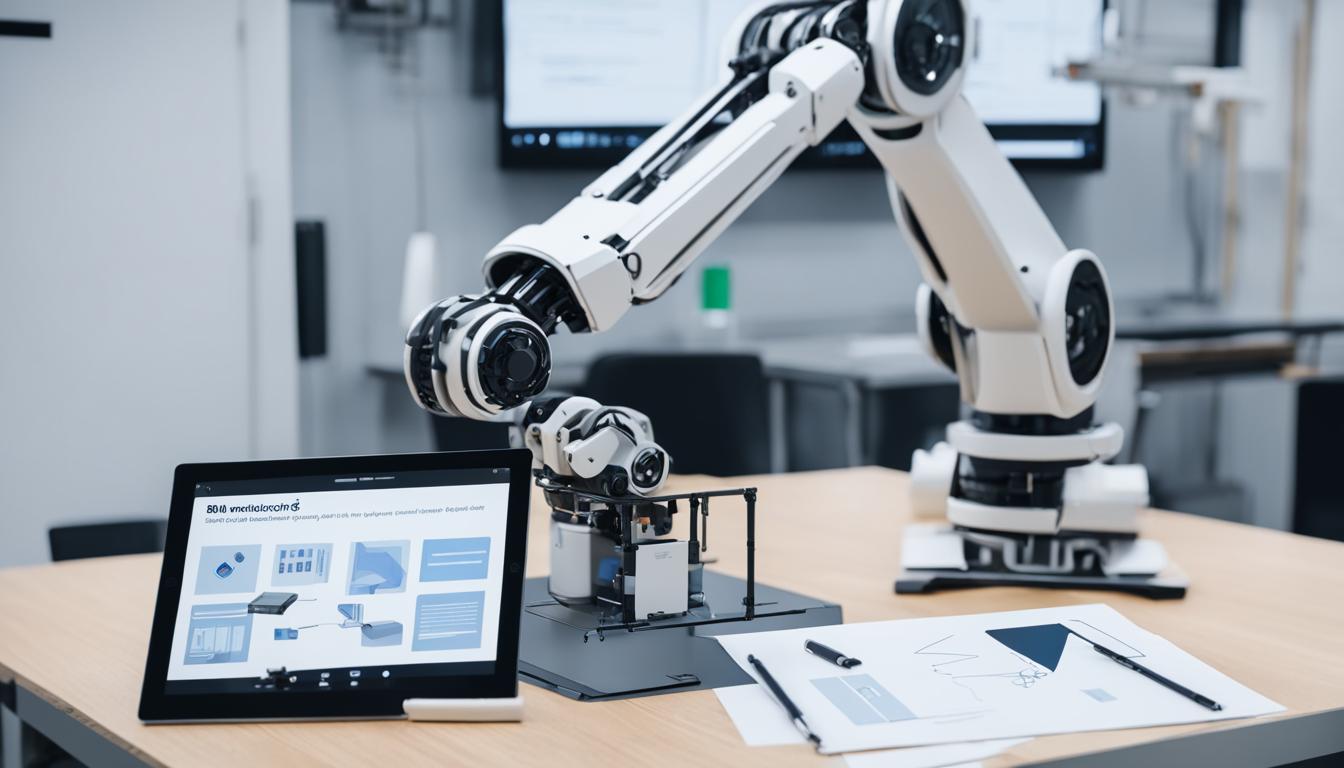Artificial intelligence (AI) is revolutionizing the field of robotics by empowering machines with human-like intelligence. As technology continues to advance, two key areas of focus in robotics are augmented reality (AR) and machine learning (ML). While both have their unique advantages, it’s essential to understand their respective roles in robotics and how they contribute to the field’s growth and innovation.
Augmented reality expands the possibilities of human-robot interaction by overlaying digital information onto the user’s physical world. It has found applications in areas such as robot-assisted surgery, navigation and teleoperation, and human-robot collaboration. On the other hand, machine learning enables robots to learn from data and improve their performance over time. It optimizes a robot’s autonomy, decision-making, and adaptability to different environments and tasks.
So, is augmented reality better than machine learning in robotics? The answer lies in the specific requirements and goals of each robotics application. Augmented reality enhances user perception and interaction with robots, improving the overall user experience. Machine learning, on the other hand, focuses on enabling robots to learn and make intelligent decisions, enhancing their capabilities in various domains.
Contents
Key Takeaways:
- Artificial intelligence (AI) plays a crucial role in enhancing robotics.
- Augmented reality improves user perception and interaction with robots.
- Machine learning enables robots to learn from data and make intelligent decisions.
- The choice between augmented reality and machine learning depends on the specific requirements and goals of a robotics application.
- Combining augmented reality and machine learning can further enhance the capabilities of robots in various industries and domains.
Advantages of Augmented Reality in Robotics
Augmented reality (AR) offers numerous advantages in the field of robotics, making it a valuable technology for enhancing various robotic applications. Here are some key benefits of using augmented reality in robotics:
Improved Perception and Environment Awareness
AR can significantly enhance a robot’s perception and awareness of its environment through computer vision. By overlaying digital information onto the robot’s view, AR provides valuable contextual data that helps the robot better understand its surroundings. This improved perception enables robots to navigate complex environments with greater accuracy and efficiency.
Enhanced Human-Robot Interaction
One of the significant uses of augmented reality in robotics is its ability to revolutionize human-robot interaction. By providing an immersive and engaging experience, AR can create a user-friendly interface for interacting with robots. This technology enables intuitive and natural communication, making it easier for users to control and collaborate with robots effectively.
AR can support robot navigation by providing visual overlays that guide the robot through complex terrains or environments. This technology can optimize the robot’s path planning and ensure efficient navigation to reach its desired destination. Additionally, augmented reality can also facilitate automatic inspection tasks by overlaying relevant information onto the robot’s visual feed, allowing it to perform inspections with precision and accuracy.
Improved Efficiency and Efficacy in Industrial Operations
The use of augmented reality in robotics can bring about significant improvements in efficiency and efficacy in various industrial operations. For example, in assembly tasks, AR can overlay step-by-step instructions and annotations directly onto the robot’s view, assisting with precise part placement and reducing errors. Similarly, in maintenance and inspection tasks, AR can provide real-time data, highlighted areas of interest, or warnings, enabling technicians to perform their tasks more effectively.
Overall, the advantages of augmented reality in robotics are undeniable. From improving perception and interaction to enhancing efficiency and efficacy in industrial operations, AR has the potential to revolutionize the way robots are utilized across different industries and domains. By leveraging the capabilities of augmented reality, robotics can achieve new levels of precision, productivity, and user experience.
Importance of Machine Learning in Robotics
Machine learning plays a crucial role in robotics, revolutionizing the capabilities of robots and their adaptability to different environments and tasks. By enabling robots to learn from data and improve their performance over time, machine learning algorithms optimize a robot’s autonomy in task planning and decision-making.
One key application of machine learning in robotics is training robots to learn the best path to take for different cases, enabling adaptive and intelligent behavior. This ability allows robots to effectively navigate complex environments and accomplish tasks more efficiently.
Moreover, machine learning techniques, such as deep neural networks, enhance a robot’s understanding of emotional intents in human-robot interactions. This improved understanding enables robots to provide more intuitive and personalized responses, improving the overall user experience.
Overall, the importance of machine learning in robotics cannot be overstated. It empowers robots to continuously learn and adapt, enabling them to perform complex tasks with greater efficiency and accuracy. The advancements driven by machine learning are paving the way for a future where robots can seamlessly integrate into various industries and domains, promoting automation and improving human-robot collaboration.

Machine learning in robotics has a wide range of applications, some of which include:
- Autonomous navigation and path planning
- Object recognition and manipulation
- Speech and gesture recognition
- Task automation and optimization
- Medical diagnostics and assistive robotics
These applications demonstrate how machine learning enables robots to perform complex tasks, learn from their surroundings, and adapt to changing circumstances. As machine learning continues to advance, its impact on robotics will only grow, further pushing the boundaries of what robots can achieve.
Comparison Between Augmented Reality and Machine Learning in Robotics
While both augmented reality and machine learning have their own strengths and applications in robotics, they serve different purposes. Augmented reality focuses on enhancing user perception and interaction with robots through the overlay of digital information onto the physical world. It improves the user experience and facilitates intuitive human-robot interaction. On the other hand, machine learning focuses on enabling robots to learn from data and make intelligent decisions. It optimizes a robot’s autonomy and allows it to adapt to different environments and tasks. Both technologies are valuable in robotics, but they serve different purposes and can be used in combination to enhance robotic capabilities.
Conclusion
In conclusion, the fields of augmented reality and machine learning both have significant roles to play in the world of robotics. Augmented reality enhances the user experience by improving perception and interaction with robots. By overlaying digital information onto the physical world, AR creates immersive and engaging experiences, revolutionizing human-robot interaction. On the other hand, machine learning empowers robots to learn from data and make intelligent decisions. ML algorithms optimize a robot’s autonomy and enable adaptive behavior, allowing them to adapt to different environments and tasks.
Augmented reality and machine learning offer distinct advantages and applications in robotics. The choice between these technologies ultimately depends on the specific requirements and goals of a robotics application. Augmented reality is particularly valuable in enhancing human-robot interaction and supporting tasks such as navigation and inspection. Meanwhile, machine learning is crucial for improving a robot’s decision-making capabilities and enabling adaptation to complex scenarios. While they serve different purposes, the combination of AR and ML can further enhance the capabilities and performance of robots across various industries and domains.
As the field of robotics continues to advance, the integration of augmented reality and machine learning will play a pivotal role in shaping the future of human-robot interaction. By harnessing the strengths of both technologies, developers and researchers can unlock innovative solutions and create robots that are more intelligent, adaptable, and user-friendly. Whether it’s enhancing the efficiency of industrial operations or revolutionizing healthcare, the potential for augmented reality and machine learning in robotics is vast and exciting.
FAQ
Is augmented reality better than machine learning in robotics?
Augmented reality and machine learning serve different purposes in robotics. Augmented reality enhances user perception and interaction, while machine learning enables robots to learn from data and make intelligent decisions. The choice depends on specific requirements and goals.
What are the advantages of augmented reality in robotics?
Augmented reality offers improved perception and awareness of the environment, supports navigation and automatic inspection, enhances user experience and interaction, and improves efficiency and efficacy in various industrial operations.
What is the importance of machine learning in robotics?
Machine learning enables robots to learn from data and improve their performance over time. It optimizes autonomy in task planning and decision-making, allows adaptation to different environments and tasks, and enhances capabilities and understanding of human-robot interactions.
What is the comparison between augmented reality and machine learning in robotics?
Augmented reality focuses on enhancing user perception and interaction, while machine learning enables robots to learn and make intelligent decisions. Both technologies have their own advantages and applications in robotics and can be used in combination to enhance robotic capabilities.




